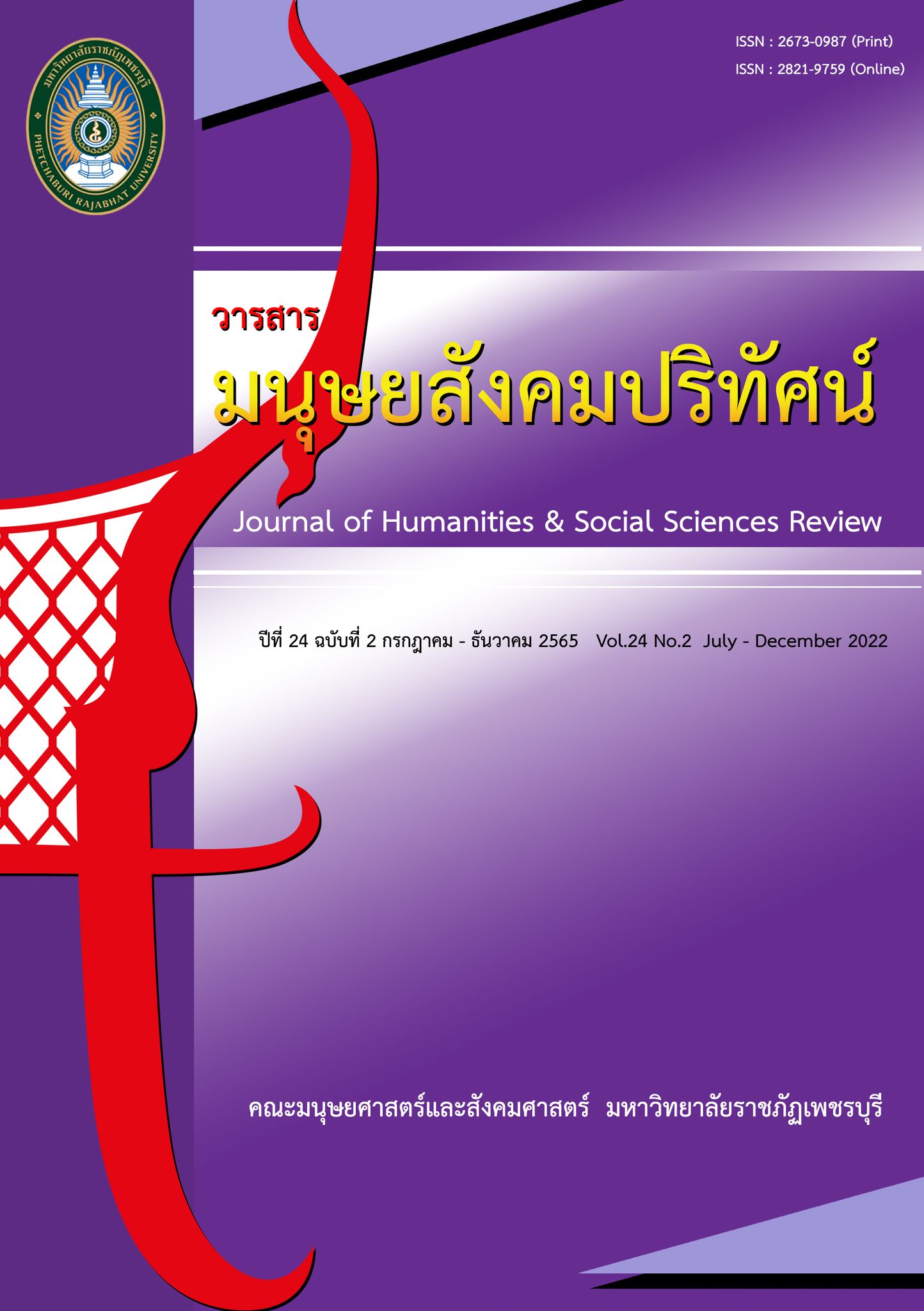A Study on Chinese Vocabulary Learning Strategies of Students Majoring in Chinese at Rangsit University
Main Article Content
Abstract
The objectives of this study are to investigate the Chinese vocabulary learning strategies employed by the undergraduate students majoring in Chinese at Rangsit University as well as to improve the quality of Chinese language teaching and learning based upon the results of this study. This study employed quantitative research methods. The sample size was specified by the quota sampling method. The instrument used was 220 questionnaires. The statistics used in the data analysis included percentage, mean, and standard deviation. The results of the study revealed that the target group generally employed Chinese vocabulary learning strategies at a high level. When considering the vocabulary learning strategies in each category, it was discovered that the target group employed the metacognitive strategies with the highest frequency, 3.81, and the knowledge and comprehension strategies with the lowest frequency, 3.33. Furthermore, it was also found that the metacognitive strategies and the compensation strategies were considered the two most important vocabulary learning strategies, respectively.
Article Details
1. Any views and comments in the article are the authors’ views. The editorial board has not to agree with those views and it is not considered as the editorial board’s responsibility. In case, there is any lawsuit about copyright infringement, it is considered as the authors’ sole responsibility.
2. The article copyright belonging to Faculty of Humanities and Social Sciences, Phetchaburi Rajabhat University are copyrighted legally. Republication must be received direct permission from the authors and Phetchaburi Rajabhat University in written form.
References
กระทรวงศึกษาธิการ. สำนักเลขาสภาการศึกษา. (2559). รายงานวิจัยเพื่อพัฒนาระบบการจัดการเรียนการสอนภาษาจีนในประเทศไทยสังเคราะห์ภาพรวม. กรุงเทพฯ: ผู้แต่ง.
เกศินี ชัยศรี. (2561). กลวิธีการเรียนรู้คำศัพท์ภาษาฝรั่งเศสของนักศึกษามหลาวิทยาลัยสงขลานครินทร์ วิทยาเขตภูเก็ต. วารสารวิเทศศึกษา, 8(2): 218.
นริศ วศินานนท์. (2549). เรียนภาษาจีนอย่างไรให้ได้ผล. วารสารศิลปศาสตร์ปริทัศน์, 1(2): 16-17.
นุสรา มัตซูกิ. (2551). การศึกษากลวิธีการจำ กลวิธีปัญญา และกลวิธีทดแทน ในการเรียนภาษาไทยของผู้เรียนชาวต่างชาติ. สารนิพนธ์การศึกษามหาบัณฑิต สาขาภาษาศาสตร์การศึกษา มหาวิทยาลัยศรีนครินทรวิโรฒ.
พิมพร วัฒนากมลกุล และปรมินทร์ ประภาการ. (2562). การศึกษากลวิธีการเรียนรู้คำศัพท์ภาษาจีนของนักศึกษาปริญญาตรี สาขาภาษาจีน มหาวิทยาลัยเทคโนโลยีราชมงคลรัตนโกสินทร์. กรุงเทพฯ: มหาวิทยาลัยเทคโนโลยีราชมงคลรัตนโกสินทร์.
ยิ่งรัก ชุนชาติประเสริฐ. (2546). กลวิธีการเรียนภาษาจีนกลางของนักศึกษาไทย. วิทยานิพนธ์ ศิลปศาสตรมหาบัณฑิต มหาวิทยาลัยธรรมศาสตร์.
สุดสัปดาห์. (2561). คอซีรีส์จีนในแป้ว! จีนออกนโยบายลดการผลิตซีรียส์จีนย้อนยุค. สืบค้นเมื่อ 25 ธันวาคม 2564, จาก (https://sudsapda.com/film/151056.html.
สุพิชฌาย์ ทวีธนวิริยา สุกัญญา วศินานนท์ และ Liu Jiaxiang. (2559). กลยุทธ์พิชิตการสอบวัดระดับความรู้ภาษาจีน แบบใหม่ระดับ 4. วารสารวิจัยมหาวิทยาลัยราชมงคลกรุงเทพ, 10(2): 125-126.
สุภาภรณ์ สุวรรณโอภาส. (2553). กลวิธีการเรียนรู้คำศัพท์ภาษาเยอรมันของผู้เรียนไทยในภาคใต้. วารสารวิชาการคณะมนุษยศาสตร์และสังคมศาสตร์, 6(1): 281.
สำนักยุทธศาสตร์อุดมศึกษาต่างประเทศ. (2553). ยุทธศาสตร์ส่งเสริมการเรียนการสอนภาษาจีนในประเทศไทย. กรุงเทพฯ: สำนักงานคณะกรรมการการอุดมศึกษา.
อรุณี อรุณเรือง ทรงสิริ วิชิรานนท์ และภาวิณี อุ่นวัฒนา. (2560). การศึกษากลวิธีการเรียนภาษา อังกฤษของนักศึกษาคณะศิลปศาสตร์ มหาวิทยาลัยเทคโนโลยีราชมงคลพระนคร. กรุงเทพฯ: มหาวิทยาลัยเทคโนโลยีราชมงคลพระนคร.
Minghui, Z. (2012). Chinese vocabulary teaching of Thai college students based on memory strategies. Master’s Thesis College of international education Shandong University China.
Oxford, R. L. (1990). Language learning strategies: What every teacher should know. New York: Newbury House Publishers.
Yamei, L. (2008). On the Chinese vocabulary learning strategies of Thai students. Journal of Yunnan Normal University, 6(2): 88-92.


